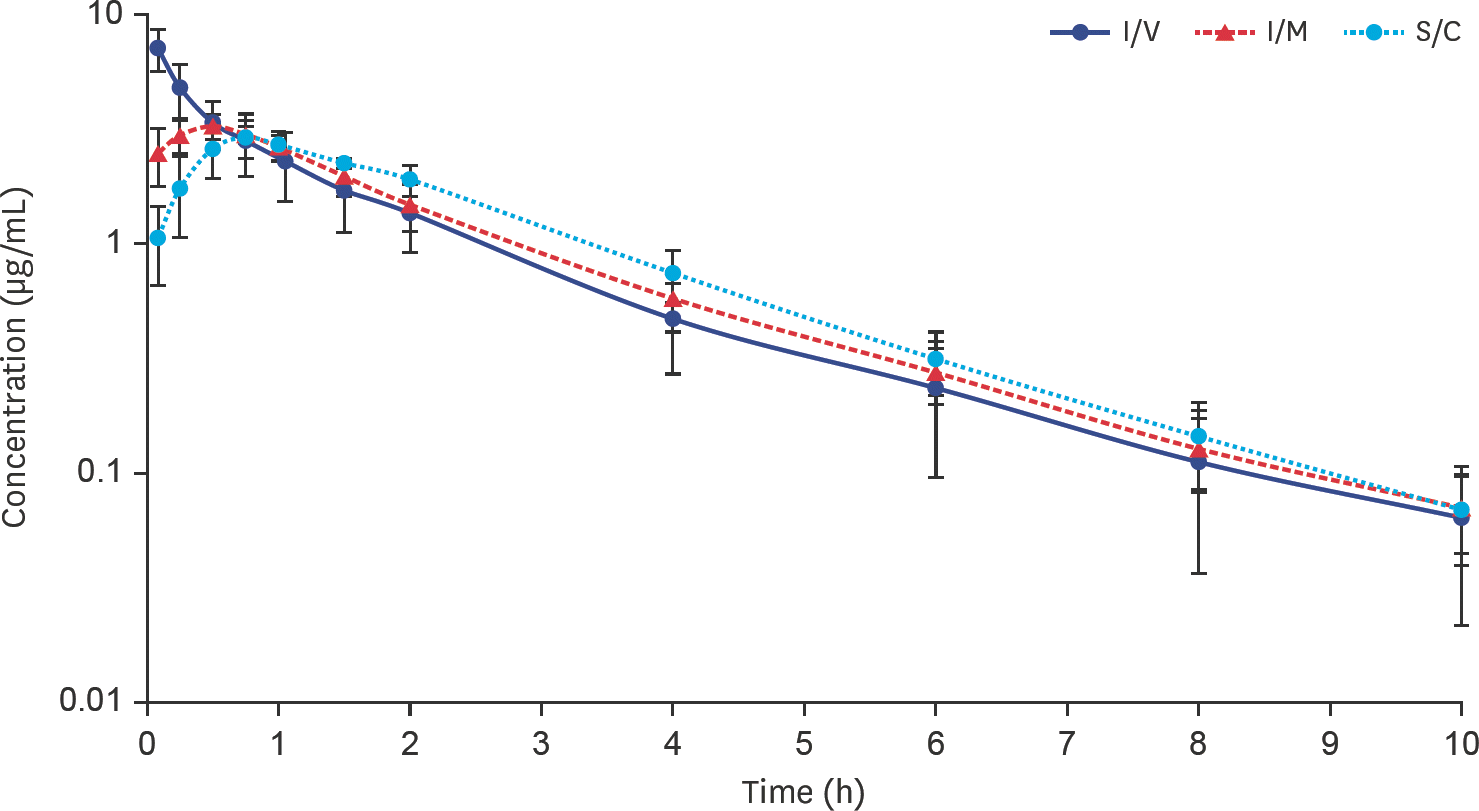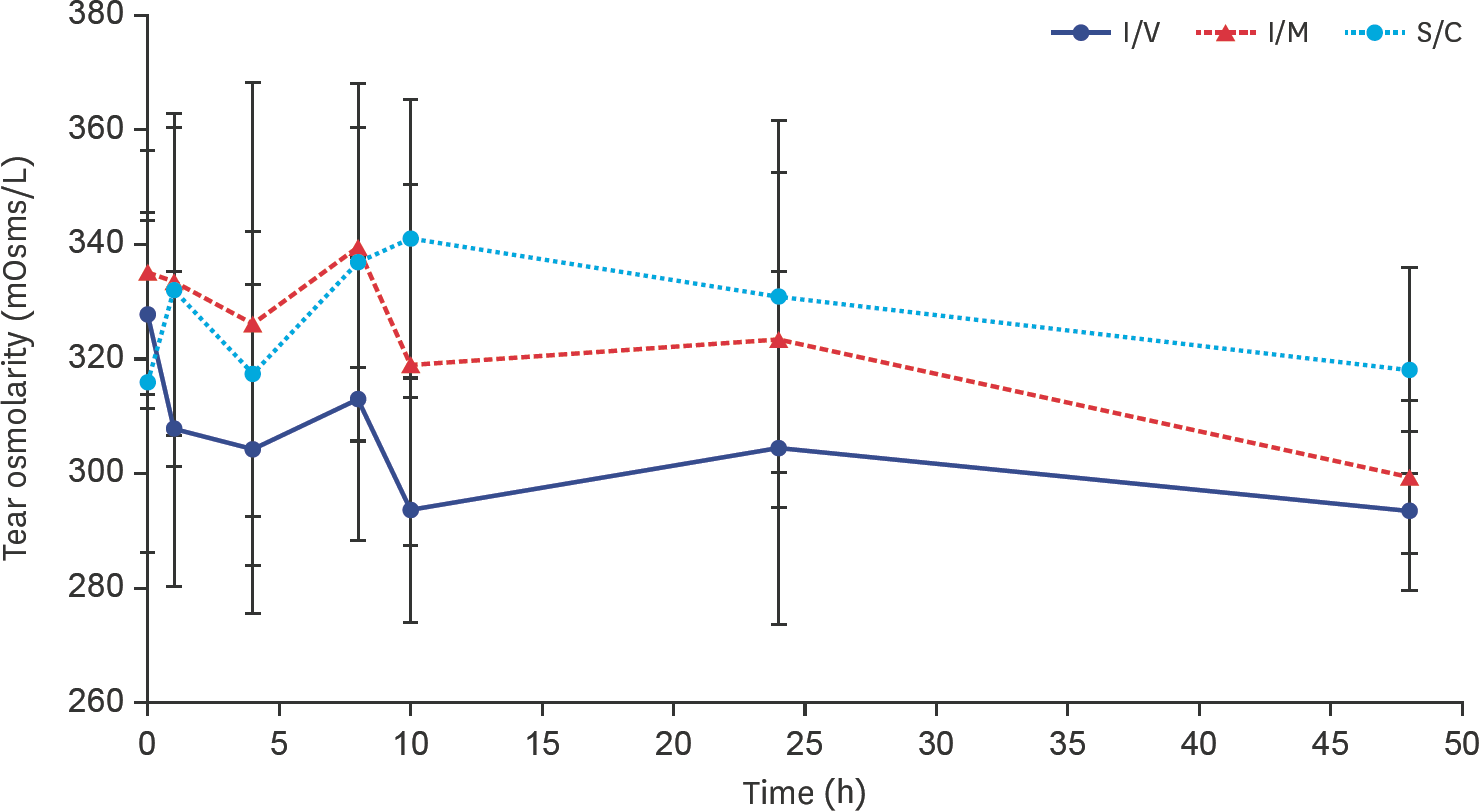1. Toutain PL, Ferran A, Bousquet-Melou A. Circulating miR-34a levels are reduced in colorectal cancer. J Surg Oncol 2012;106:947–52.
2. Rougier S, Galland D, Boucher S, Boussarie D, Vallé M. Epidemiology and susceptibility of pathogenic bacteria responsible for upper respiratory tract infections in pet rabbits. Vet Microbiol. 2006; 115:192–198.

3. Percy DH, Barthold SW. Pathology of Laboratory Rodents and Rabbits. 3rd ed.Ames: Blackwell Publishing;2008.
4. Riviere JE, Papich MG. Veterinary Pharmacology and Therapeutics. 10th ed.Ames: John Wiley & Sons;2018.
5. Brown SA. Fluoroquinolones in animal health. J Vet Pharmacol Ther. 1996; 19:1–14.

6. Martinez M, McDermott P, Walker R. Pharmacology of the fluoroquinolones: a perspective for the use in domestic animals. Vet J. 2006; 172:10–28.

7. Landoni MF, Albarellos GA. Pharmacokinetics of levofloxacin after single intravenous, oral and subcutaneous administration to dogs. J Vet Pharmacol Ther. 2019; 42:171–178.

8. Davis R, Bryson HM. Levofloxacin. A review of its antibacterial activity, pharmacokinetics and therapeutic efficacy. Drugs. 1994; 47:677–700.
9. Giguère S, Prescott JF, Dowling PM. Antimicrobial Therapy in Veterinary Medicine. Ames: John Wiley & Sons;2013.
10. Albarellos GA, Ambros LA, Landoni MF. Pharmacokinetics of levofloxacin after single intravenous and repeat oral administration to cats. J Vet Pharmacol Ther. 2005; 28:363–369.

11. Madsen M, Messenger K, Papich MG. Pharmacokinetics of levofloxacin following oral administration of a generic levofloxacin tablet and intravenous administration to dogs. Am J Vet Res. 2019; 80:957–962.

12. Goudah A. Pharmacokinetics of levofloxacin in male camels (Camelus dromedarius). J Vet Pharmacol Ther. 2009; 32:296–299.
13. Goudah A, Abo-El-Sooud K. Pharmacokinetics, urinary excretion and milk penetration of levofloxacin in lactating goats. J Vet Pharmacol Ther. 2009; 32:101–104.

14. Goudah A, Hasabelnaby S. Disposition kinetics of levofloxacin in sheep after intravenous and intramuscular administration. Vet Med Int. 2010; 2010:727231.

15. Varia RD, Patel JH, Patel UD, Bhavsar SK, Thaker AM. Disposition of levofloxacin following oral administration in broiler chickens. Isr J Vet Med. 2009; 64:118–121.
16. Lee HK, DeVito V, Vercelli C, Tramuta C, Nebbia P, Re G, Kovalenko K, Giorgi M.
Ex vivo antibacterial activity of levofloxacin against
Escherichia coli and its pharmacokinetic profile following intravenous and oral administrations in broilers. Res Vet Sci. 2017; 112:26–33.

17. Aboubakr M. Pharmacokinetics of levofloxacin in Japanese quails (
Coturnix japonica) following intravenous and oral administration. Br Poult Sci. 2012; 53:784–789.

18. Aboubakr M, Soliman A. Comparative pharmacokinetics of levofloxacin in healthy and renal damaged Muscovy ducks following intravenous and oral administration. Vet Med Int. 2014; 2014:986806.

19. Toutain PL, del Castillo JR, Bousquet-Mélou A. The pharmacokinetic-pharmacodynamic approach to a rational dosage regimen for antibiotics. Res Vet Sci. 2002; 73:105–114.

20. Papich MG. Pharmacokinetic-pharmacodynamic (PK-PD) modeling and the rational selection of dosage regimes for the prudent use of antimicrobial drugs. Vet Microbiol. 2014; 171:480–486.

21. Destache CJ, Pakiz CB, Larsen C, Owens H, Dash AK. Cerebrospinal fluid penetration and pharmacokinetics of levofloxacin in an experimental rabbit meningitis model. J Antimicrob Chemother. 2001; 47:611–615.

22. Shellim C. Parenteral drug administration. Vet Nurs J. 2011; 26:117–119.

23. Krustev SZ, Rusenova NV, Haritova AM. Effect of diclofenac on ocular levels of ciprofloxacin and lomefloxacin in rabbits with endophthalmitis. Drug Dev Ind Pharm. 2014; 40:1459–1462.

24. Sakai T, Shinno K, Kurata M, Kawamura A. Pharmacokinetics of azithromycin, levofloxacin, and ofloxacin in rabbit extraocular tissues after ophthalmic administration. Ophthalmol Ther. 2019; 8:511–517.

25. Blomquist PH, Palmer BF. Ocular complications of systemic medications. Am J Med Sci. 2011; 342:62–69.

26. Shirani D, Selk Ghaffari M, Akbarein H, Haji Ali Asgari A. Effects of short-term oral administration of trimethoprim-sulfamethoxazole on Schirmer II tear test results in clinically normal rabbits. Vet Rec. 2010; 166:623–624.

27. Rajaei SM, Ansari Mood M, Selk Ghaffari M, Razaghi Manesh SM. Effects of short-term oral administration of trimethoprim-sulfamethoxazole on tear production in clinically normal Syrian hamsters. Vet Ophthalmol. 2015; 18:83–85.

28. Toutain PL, Bousquet-Mélou A. Plasma clearance. J Vet Pharmacol Ther. 2004; 27:415–425.

29. Gabrielsson J, Daniel W. Pharmacokinetic and Pharmacodynamic Data Analysis – Concepts and Applications. 5th ed.Stockholm: Swedish Pharmaceutical Press;2016.
30. Toutain PL, Bousquet-Mélou A. Plasma terminal half-life. J Vet Pharmacol Ther. 2004; 27:427–439.

31. Kumar A, Rahal A, Ragvendra R, Prakash A, Mandil R, Garg SK. Pharmacokinetics of levofloxacin following intravenous and intramuscular administration in cattle calves. Asian J Anim Vet Adv. 2012; 7:1006–1013.

32. Basyigit I, Kahraman G, Ilgazli A, Yildiz F, Boyaci H. The effects of levofloxacin on ECG parameters and late potentials. Am J Ther. 2005; 12:407–410.

33. Marín P, Fernández-Varón E, Escudero E, Vancraeynest D, Cárceles CM. Pharmacokinetic-pharmacodynamic integration of orbifloxacin in rabbits after intravenous, subcutaneous and intramuscular administration. J Vet Pharmacol Ther. 2008; 31:77–82.

34. Fernández-Varón E, Bovaira MJ, Espuny A, Escudero E, Vancraeynest D, Cárceles CM. Pharmacokinetic-pharmacodynamic integration of moxifloxacin in rabbits after intravenous, intramuscular and oral administration. J Vet Pharmacol Ther. 2005; 28:343–348.

35. Patel UD, Patel JH, Bhavsar SK, Thaker AM. Pharmacokinetics of levofloxacin following intravenous and subcutaneous administration in sheep. Asian J Anim Vet Adv. 2012; 7:85–93.

36. Marín P, García-Martínez F, Hernándis V, Escudero E. Pharmacokinetics of norfloxacin after intravenous, intramuscular and subcutaneous administration to rabbits. J Vet Pharmacol Ther. 2018; 41:137–141.

37. Fernández-Varón E, Marin P, Escudero E, Vancraeynest D, Cárceles CM. Pharmacokinetic-pharmacodynamic integration of danofloxacin after intravenous, intramuscular and subcutaneous administration to rabbits. J Vet Pharmacol Ther. 2007; 30:18–24.

38. Toutain PL, Bousquet-Mélou A. Bioavailability and its assessment. J Vet Pharmacol Ther. 2004; 27:455–466.

39. Abo-el-Sooud K, Goudah A. Influence of
Pasteurella multocida infection on the pharmacokinetic behavior of marbofloxacin after intravenous and intramuscular administrations in rabbits. J Vet Pharmacol Ther. 2010; 33:63–68.

40. Marangos MN, Zhu Z, Nicolau DP, Klepser ME, Nightingale CH. Disposition of ofloxacin in female New Zealand white rabbits. J Vet Pharmacol Ther. 1997; 20:17–20.

41. Mitchell M, Tully TN. Manual of Exotic Pet Practice. St. Louis: Elsevier Health Sciences;2008.
42. Harcourt-Brown F. Textbook of Rabbit Medicine. London: Elsevier;2002.
43. Rajaei SM, Rafiee SM, Ghaffari MS, Masouleh MN, Jamshidian M. Measurement of tear production in English Angora and Dutch rabbits. J Am Assoc Lab Anim Sci. 2016; 55:221–223.






 PDF
PDF Citation
Citation Print
Print


 XML Download
XML Download